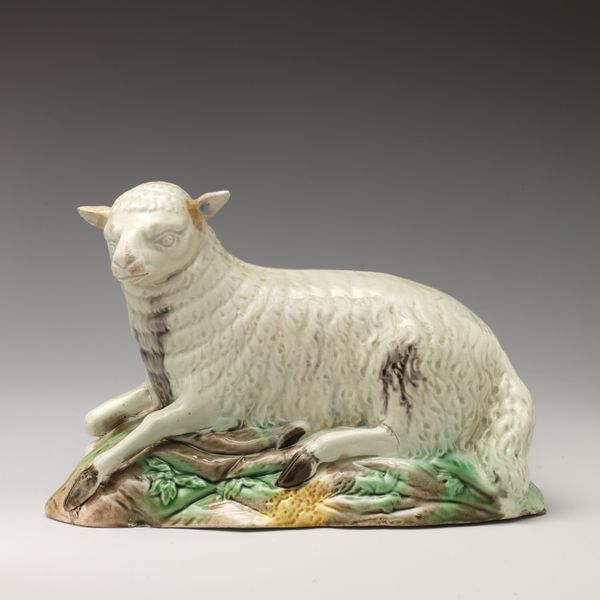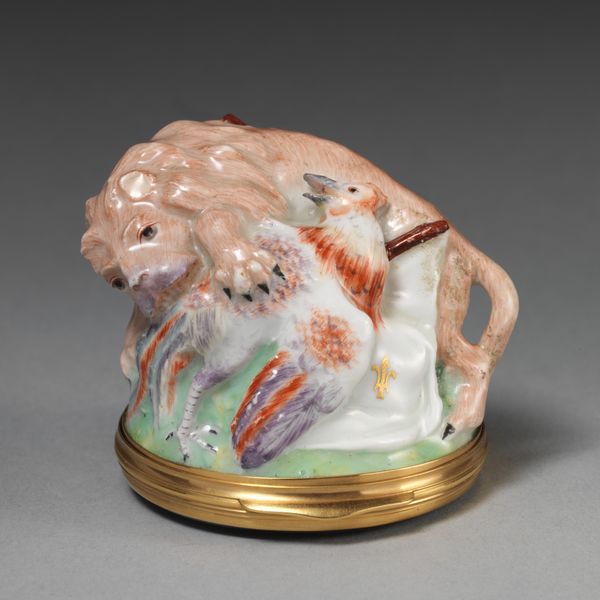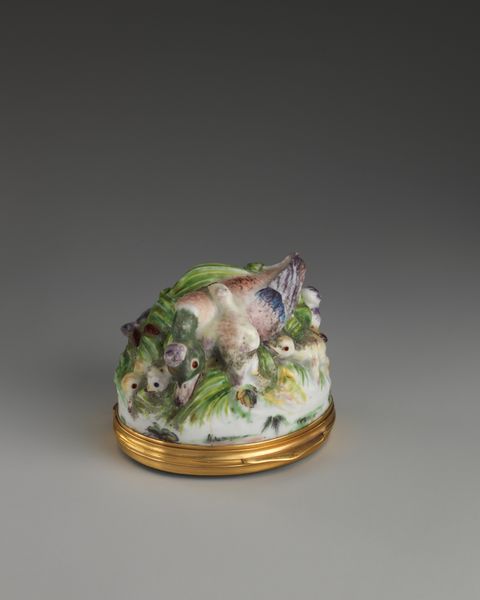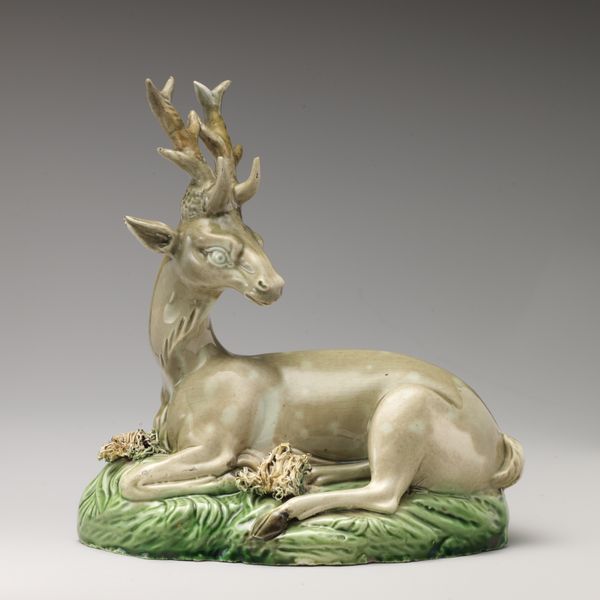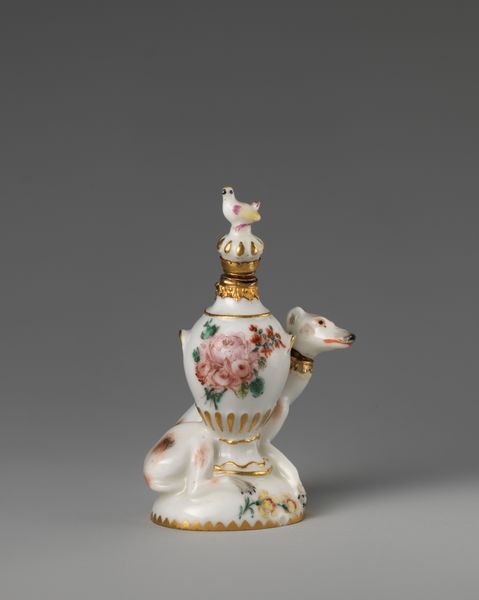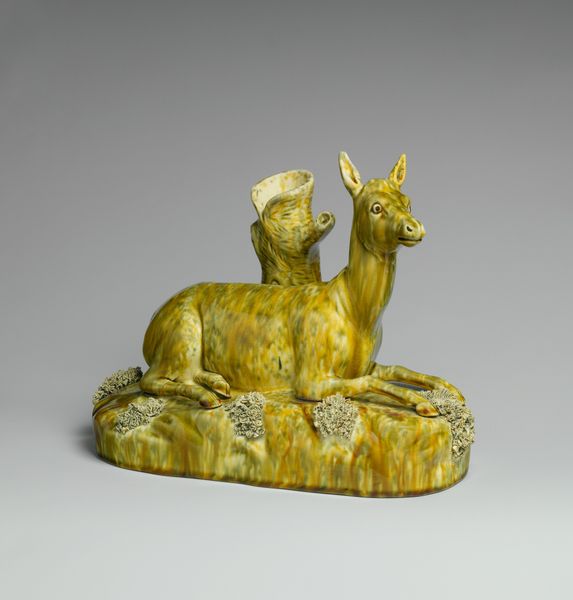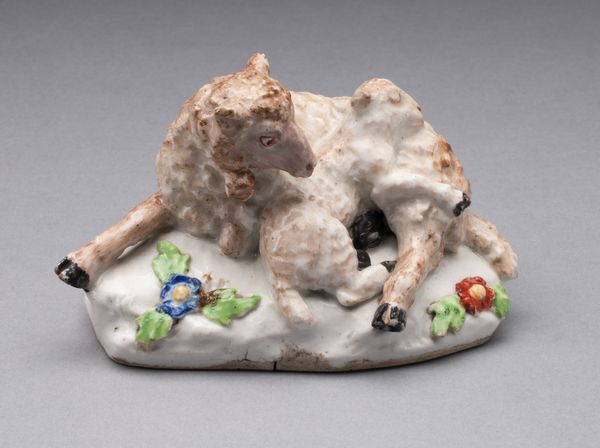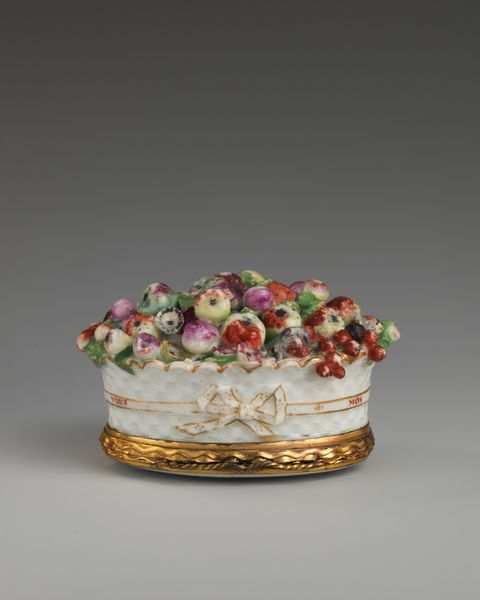
Snuffbox in the Form of a Stag 1755 - 1765
0:00
0:00
ceramic, porcelain, sculpture
#
ceramic
#
porcelain
#
figuration
#
sculpture
#
ceramic
#
decorative-art
#
rococo
Dimensions: Length: 3 7/8 in. (9.8 cm)
Copyright: Public Domain
Editor: This delightful piece is a porcelain snuffbox in the form of a stag, created between 1755 and 1765 by the Ludwigsburg Porcelain Manufactory. It’s currently housed in the Metropolitan Museum of Art. I'm struck by the realism in the stag's posture and the almost jewel-like quality of the surrounding foliage. How would you interpret this work purely from a formal perspective? Curator: The composition is particularly intriguing. Observe how the stag's reclining form establishes a dominant horizontal axis, countered by the vertical thrust of its antlers, albeit subtly. This interplay creates a dynamic tension within a small, contained space. Furthermore, note the textures – the smooth, lustrous glaze of the porcelain contrasting with the intricate, almost baroque detailing of the foliage. The colour palette is deliberately muted, drawing our attention to form over flamboyant decoration. How do these elements contribute to the object’s overall impact, in your opinion? Editor: I think the balance you pointed out helps the stag feel both monumental and delicate at the same time. It keeps the object from feeling too cute or sentimental. Curator: Precisely. The artist has achieved a remarkable equilibrium. By carefully manipulating line, form, texture and color, the Ludwigsburg Porcelain Manufactory crafted an object that transcends its utilitarian function as a snuffbox. It becomes an object of contemplation. I'd add the gilt trim that encircles the piece draws your eye. A line creating additional dimension by contrasting sharply. Editor: That's fascinating. I hadn’t considered how the artist used such simple elements to create such a complex effect. I never knew analyzing it this way could be so revealing! Curator: Indeed. Attending to the intrinsic formal qualities unlocks a deeper appreciation of the artist's intention and the artwork's inherent aesthetic value. It allows us to strip away superficial narratives and confront the essence of the object itself.
Comments
No comments
Be the first to comment and join the conversation on the ultimate creative platform.
